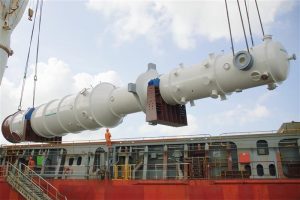Concerned that it was losing competitive edge, the US company Air Products and Chemicals Inc, centralised its external technology efforts in a move towards open innovation. It formed Corporate Technology Partnerships to implement best practices across the company.
Before this move there had been little coordination between coordination of efforts between business areas and R&D groups, a situation that had been described as a ‘silo mentality’, with no coordination of work processes or central repository of best practices and the resulting contracts.
John Tao, corporate director of technology partnerships at Air Products, and Vincent Magnotta, manager of technology transfer, produced a paper about their experiences that is one of the best cited on Research Technology Management.
The authors identified the most notable driving forces for open innovation as being:
- Increased pressure for faster, better and lower cost R&D;
- Realisation that no company has more than one per cent of global R&D capacity;
- Reduced inflow of scientific talent to the US;
- Recognition that the US was being surpassed in science education as evidenced by annual doctorate degrees granted.
The paper “How Air Products and Chemicals ‘identifies and accelerates'” reviews the process of identifying corporate technical needs and the role of external partnering played in accelerating the innovation process.
The external partnering strategies reviewed:
- global R&D insourcing
- internet-based providers
- partnering with the government
- licensing in.
Air Products’ approach to open innovation was to ‘identify and accelerate’, identifying and prioritising the key technical needs and using a toolbox of approaches to accelerate solutions to those needs. This approach enabled the company to innovate faster, better and at lower cost.

However, everything was not plain sailing, when the company began introducing open innovation it met internal challenges as historically over 95 per cent of its R&D budget had been earmarked for internal development. The initial problem was budgeting sufficiently to include open innovation in the R&D portfolio, but as the company became more successful at open innovation its external budget increased.
A second challenge was grassroots resistance from the internal technical community. Some members viewed open innovation as a threat to their job security. In the closed innovation model technical community members were expected to invent everything internally and be rewarded accordingly. One way to overcome this resistance was to reward the technical community based on its ability to solve technical problems – regardless of the source of the solutions.
The authors conclude that open innovation is here to stay and that the fraction of a successful company’s R&D budget devoted to open innovation will need to grow. Warning that companies that choose to remain internally focused for solutions to their technology needs will be left behind.
Taken from How Air Products and Chemicals ‘identifies and accelerates’ by John Tao and Vincent Magnotta published in Research Technology Management in 2006.

